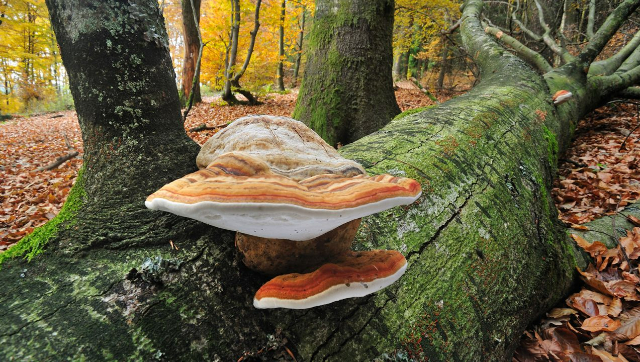Plastic has been the biggest bane of our existence. However, there is a possibility that scientists may have finally found the answer to the problem that plastic poses, that too in the form of an organic being. The being in question? A mushroom. In a bid to find a more suitable material for the exoskeleton of an aeroplane, scientists have discovered that one particularly impressive mushroom allows them to engineer and manufacture a compound that can potentially replace plastic in a bunch of different applications. Meet Fomes fomentarius, the wonder fungi A study on the fungus Fomes fomentarius was released recently in the journal Science Advances. It has an amazing ability to produce a broad variety of materials with varying characteristics, ranging from delicate and spongelike to tough and woody. By studying the architecture of the mushroom, researchers hope to pave the way for it to become a more sustainable building block of our lives. This fungus is unusual as it has three distinct layers, each with specific characteristics that could be helpful in various ways. A very strong outer crust exists, which could be used to create an impact-resistant covering for windscreens, for example. Then there’s a soft intermediate layer that feels nice on the skin and has the potential to mimic leather. The third interior layer resembles timber. How a mushroom can save the world Using mushrooms instead of plastic could help to reduce the mountains of garbage that people generate. Plastics derived from fossil fuels are extremely difficult to recycle and frequently end up clogging dumps, environments, and rivers. Materials produced from mushrooms, on the other hand, would be biodegradable and could be repurposed to make more of the same things at the end of a product’s existence. “We were really amazed with the structure because one thing that you immediately notice if you’re a biologist is that when something that beautiful starts to form, nature doesn’t just do it because it’s nice — there must be a function there,” says Pezhman Mohammadi, one of the new paper’s authors and a senior scientist at VTT Technical Research Centre of Finland. In the wild the mushroom may resemble a horse’s hoof sprouting out of a tree trunk in the open. For thousands of years, humans have used it as a firestarter to light fires. This is how it got the titles foot fungus and tinder fungus. According to the new study, the mushroom could be used to produce a new class of ultra-lightweight high-performance materials in the future. The research team studied each layer and assessed its possible applications using sophisticated imaging methods and mechanical strength tests. Mushroom-based construction products, packaging, and textiles are already gaining popularity. And Mohammadi and his colleagues have already made a prototype pair of headphones using a fungus’ thread-like structure called mycelium. Still, a long way to go Of course, fungi have a long way to go before they can substitute plastic. They cannot be harvested from woods because it would be detrimental to the ecology. To be marketable, mycelium would need to be mass-produced. Furthermore, you may want to modify the fungus’ genome to highlight specific characteristics. There is still more study and testing to be done to ensure that the final products are both biodegradable and durable enough for customers. The expectation is that mushroom-based goods will degrade once they are no longer usable, rather than lingering forever, as much plastic pollution does. Fungus-derived goods can even become sustenance for new mycelium production as waste, resulting in a closed-loop industrial process. That’s the ultimate bar for making any commercial product slightly more sustainable. Read all the Latest News , Trending News , Cricket News , Bollywood News , India News and Entertainment News here. Follow us on Facebook, Twitter and Instagram.
A mushroom may hold the answer to all of our problems caused by plastic. Studies have shown that the mushroom Fomes fomentarius, can be synthesised to create a plastic alternative that is super strong, and can also decompose over time.
Advertisement
End of Article


)

)
)
)
)
)
)
)
)



